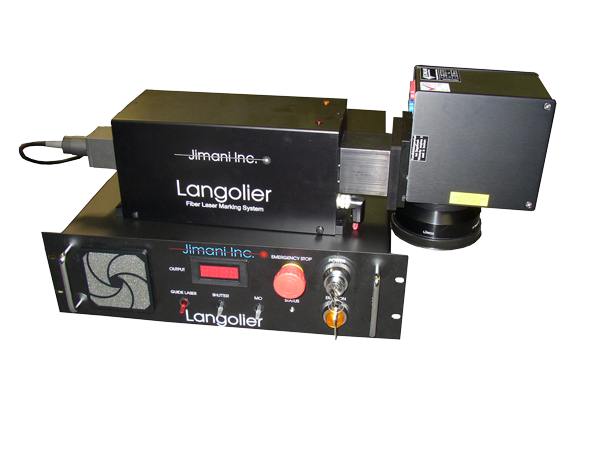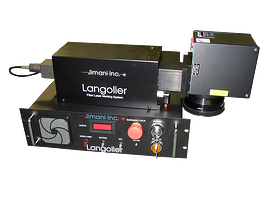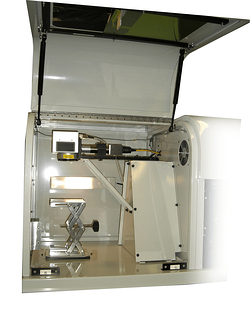Rotary Laser Marking with the Hybrid Fiber Laser
We used the Jimani hybrid laser marking system to quickly rotary mark cylindrical objects like pens...

First, there is no one “right” laser system configuration. Turnkey laser systems can play an integral part in a much larger process or production setup or stand on their own, and every setup and situation has different specifications and requirements. That being said, there are a few things to consider when defining a laser configuration.
Laser Power and Beam Delivery Optics
The first consideration must be the laser power and beam delivery optics.
The laser power question simply has to do with how much laser power is required to successfully perform the marking task. If the task consists of marking anodized aluminum substrates with graphics or text then a 20 watt Q switched fiber laser will provide more than enough power to provide high quality marks at high marking speeds. If the task consists of engraving text or graphics 20 mils deep into a metal substrate, a 50 watt Q switched fiber laser might be more appropriate.
Beam delivery optics determine the size of the focused spot on the material to be marked and the overall size of the marking field. Spot size is an extremely important consideration. The smaller the focused spot, the higher the laser power density at the work. Higher power density translates into faster marking times and deeper marks.
Power Density vs Marking Field Size
 F theta lenses come in a variety of focal distances. Longer focal distance lenses result in larger marking fields. Longer focal distance lenses also result in larger focused spot sizes which decrease power density. There is a trade off between spot size (power density) and marking field size. An application study can be very helpful in determining the best laser and optical configuration for a particular application.
F theta lenses come in a variety of focal distances. Longer focal distance lenses result in larger marking fields. Longer focal distance lenses also result in larger focused spot sizes which decrease power density. There is a trade off between spot size (power density) and marking field size. An application study can be very helpful in determining the best laser and optical configuration for a particular application.
We highly recommend testing to determine the correct power density especially for large field marking. If you are planning on doing large field marking, you can learn more about the specifics of that type of marking here. You can even see an example of how we engraved graphics on a large part here.
Workstation Setup

The next configuration consideration has to do with the workstation that the laser is mounted on. If the only requirement for the laser is to mark a single part type over and over again then the workstation can be relatively simple. The laser simply has to be placed in a manner that presents the work to the laser beam at the correct focal distance of the f theta lens.
On the other hand, if the laser is going to be used to mark a variety of part sizes and shapes, there must be some means of presenting all parts at the correct focal distance of the lens. This can be accomplished by specialized parts fixturing or by some mechanical means of moving either the part or the lens so that the surface to be marked is always at the correct focal distance from the lens.
If you are looking for a turnkey laser system then you may want to consider a standalone laser marking system like the Langolier Open Table Fiber system. This is a versatile solution that allows focusing the lens up to 29 inches above the marking surface. Having a system this versatile is a good option if you intend to mark a variety of shapes, sizes, and materials.
Learn More
Contact Jimani and see what they can do for you with a state of the art laser marking system.
We used the Jimani hybrid laser marking system to quickly rotary mark cylindrical objects like pens...
Industry: Firearms
Material: Stainless steel
Mark Data Type: Logo + text
Laser Mark Type: Deep...
If you are in the market for laser marking machines, you have many options to choose from. The type...